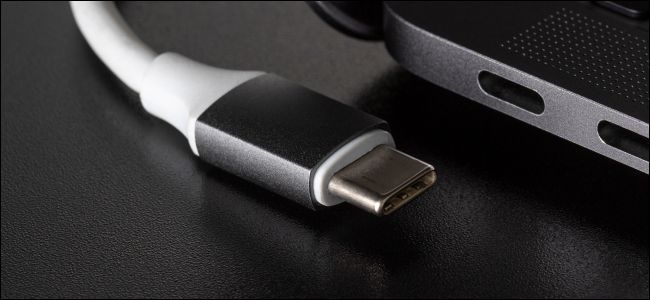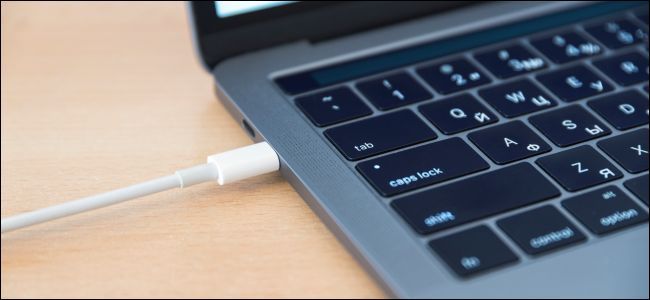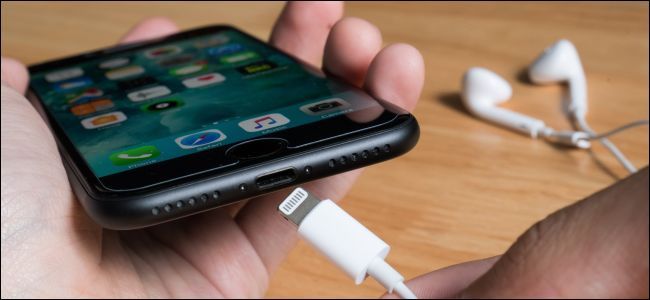Quick Links
The new USB specification has been finalized. Soon you can upgrade from USB 3.2 Gen 2x2 to USB4 Gen 3x2. Just don't use USB4 Gen 2x2---that's not any faster than the previous generation. Confused? Welcome to USB.
The naming isn't the only confusing part, either. USB cables that look similar on the outside are often very different on the inside. And a bad cable could fry your hardware.
USB4's Naming Is a Mess (Once Again)
USB's naming used to be simple. Remember USB 2.0 and USB 3.0? That was nice. Things became complicated with USB 3.1 and USB 3.2. Now USB4 is making it extra complicated---and yes, it's called USB4. You're not supposed to call it USB 4.0.
The USB Implementers Forum, the industry group that manages the standard, says USB4 offers speeds "up to 40Gbps." But there are different speeds. An engineer familiar with the specification explained the problem to TechRepublic:
"Once the specifications are released, there will be a new round of confusion," the source told TechRepublic. "It's going to be USB4, but you have to qualify what USB4 means, because there are different grades. USB4, by definition, has to be [at least] Gen 2×2, so it will give you 10 Gbps by 2, that's 20 Gbps. There's going to be USB4 Gen 3×2, which is 20 Gbps per lane. 20 by 2 will give you 40 Gbps."
This keeps things good and complicated. There's no USB 3.0 anymore---that was retroactively renamed "USB 3.1 Gen 1" and then to "USB 3.2 Gen 1." What would have been called USB 3.1 was named "USB 3.1 Gen 2" and later named "USB 3.2 Gen 2." The next version, which would have been USB 3.2, was then named "USB 3.2 Gen 2x2," breaking the pattern.
We've explained what all those USB "Gens" are and how they relate to the term "SuperSpeed USB." It's absurdly confusing and hard to keep straight, especially when the USB-IF keeps renaming previous generations of the standard.
Not All USB Cables Are Created Equal
Let's say you want to take advantage of those 40 Gbps speeds. You'll have to buy a cable certified for 40 Gbps speeds. You can't just pick up any old cable and expect it to function at those speeds. But certification isn't mandatory. Some uncertified cables may function properly, too, and some cable manufacturers won't bother certifying their products.
Data transfer speeds aren't the only things that can differ, either. Not every cable can deliver the same amount of power. Different cables will charge devices at different speeds. Just because a cable has a fast data transfer speed doesn't mean it will have a fast charging speed or vice versa.
The cable situation is only getting more and more complicated. While we've standardized on the great little USB-C connector that can be plugged in any which way, the rest of the cable has become less standard and less consistent.
Even if a cable looks modern on the outside, it might not actually be modern on the inside. Many USB-C cables on the market just use USB 2.0 on the inside. They're designed for charging and not fast speeds. Some cables include support for "alternative modes" like Thunderbolt 3. That's a collaboration between Intel and Apple that offers 40 Gbps speeds. But only devices with Thunderbolt 3 get these speeds, and you'll need a Thunderbolt 3-compatible cable to take advantage of them.
USB4 makes things a bit simpler by eliminating the need for Thunderbolt 3 and offering 40 Gbps speeds---but even then, only if you have devices capable of supporting this speed, and only if you have a cable that also supports it.
There are other alternative modes like HDMI and MHL, too. Not all USB cables are the same.
Bad USB-C Cables Are Still Out There
Since the early days of USB-C, bad cables have been lurking out there. Some USB Type-C cables can actually fry your device when you plug them into a laptop or any other charger to charge. The USB-C cable itself is supposed to stop the device from pulling too much power from the charger.
But many cable manufacturers didn't bother designing their cables properly. Some cables allow devices to draw too much power when connected to a charger using a traditional USB-A port. Famously, even the official charging cable shipped with the Oppo OnePlus smartphone was bad. It was fine when you charged Oppo's phone, but plug that USB-C cable into another phone, and it could damage your hardware.
Rather than picking up any charging cable, you should do your due diligence before buying one. Thankfully, the USB-IF certification process should help ensure that it's easy to find a good cable. Look for the certification mark. But not all cables are certified. Uncertified cables are available and may work fine!
We like AmazonBasics cables, which are inexpensive, USB-IF certified, and clearly labeled with their speeds. And yes, they have confusing names like "AmazonBasics USB Type-C to USB-A Male 3.1 Gen2" because USB is complicated.
No Wonder Apple Stuck With Lightning
Apple still uses the Lightning port on its iPhones. It's similar in size to a USB-C connector, but it's proprietary. Apple makes its own Lightning cables, but other manufacturers can also make them. There's just one catch: Apple has to certify the cables and provide a special hardware chip that lets them work. Unlike with USB, manufacturers can't make flakey cables that appear to work but have problems. Apple has a veto thanks to MFi certification.
There's also just one type of Lightning cable. There aren't different "modes" that can exist on a Lightning cable and confusingly named generations like "Lightning 3.2 Gen 2x2" and "Lightning4."
The rest of the industry may gripe, but Apple has made things more straightforward and less confusing by sticking with Lightning cables. The USB standard is getting better hardware, but USB cables are only getting more complicated and confusing as each new generation is introduced. It's a shame the USB-IF didn't use USB4 as an opportunity to make everything simpler.



